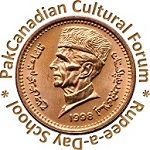1. There are several types of yarn used in knitting. The biggest and bulkiest yarns are called bulky or super-bulky. The lightest and finest yarns are baby (sport) yarns and the very thin thread-like yarns used to make lace. Between the two extremes, there's a yarn that's moderate weight, easy to use and easy to find. What is it called?
Bulky and super-bulky yarns are great for ultra-warm winter clothing like hats, sweaters, scarves and mittens. They're thick and somewhat heavy and knit up quickly on large needles. Lightweight yarns are used create items that are delicate, lacy, thin, or dressy. They are more tricky to knit due to their delicacy and thinness. Moderately thick worsted yarn is the most versatile weight, is suitable for the most projects, and is easiest for learning how to knit. 72% of players have answered correctly.
2. The lightest and thinnest weight of yarn, it is often used for newborn layettes, fancy sweaters or socks. It's known as "baby" weight or _________ yarn.
Fingering yarn is very light and delicate and requires a good deal of patience, excellent eyesight, and a very adept hand. It is often knitted on very thin needles and used for lacy, intricate patterns. It's not a yarn for a beginning knitter, and some knitters never attempt using it. Garments and household linens created with fingering yarn (especially newborn layettes) are destined to become family heirlooms! 74% of players have answered correctly.
3. Yarn is usually not sold in balls, much to the dismay of kitties everywhere. It's sold as a loosely coiled "ropes" or in wrapped oblongs. These units of yarn are known as:
Skeins are machine-created to make life easier for the knitter. They are lightly twisted in such a way that you can easily pull the yarn out from them without twisting it and without much rolling around. Handspun and hand-dyed yarns are usually sold as hanks. Hanks have to be rolled into balls to use. 87% of players have answered correctly.
4. There are three main types of fiber that are used in knitting: synthetic, animal and plant. Which of the following is a synthetic fiber commonly used to make yarn?
5. Knitting needles can be made at home using dowel rods or chopsticks.
Craftiness knows no boundaries! Many knitters have successfully created their own needles. 86% of players have answered correctly.
6. Name three plant fibers that are used to create knitting yarn.
Hemp, cotton and linen are three of the most common plant fibers used for knitting yarn. Even banana, soy and bamboo fibers are now available as yarn. Plant fibers have the advantage of being cruelty-free and some are sustainable, requiring minimal resources or chemical pesticides or fertilizers. Tomato, locoweed, maple, rattan, wicker and seagrass are not used for yarn. The other choices are animal not plant fibers. 69% of players have answered correctly.
7. A small sample of knitting is known as a _____ .
In order to determine the correct size of a finished item, it's necessary to calculate "gauge" by creating a small sample of knitting known as a swatch. The "gauge" of a project depends on the size of the needles, weight and properties of the yarn, and the tension of the stitches. 85% of players have answered correctly.
8. Beginning knitting projects are created with combinations of two very simple stitches: knit and purl. When only knit stitches are used, the texture that's created looks rugged, ridged and knobby on BOTH sides and is quite sturdy. This is called the _______ stitch.
A great stitch for beginners, it's easy to do and lends itself to simpler projects. 82% of players have answered correctly.
9. Back to knit and purl. When knit and purl stitches are used in alternating sections in the same row, and the pattern is repeated in the following rows, a special stretchy effect is created that you often find on cuffs and hems.
One of my first projects was a ribbed scarf. I used alternating bands of brown and variegated autumn colors in a synthetic and wool blend on a round #9 needle. The scarf has long ridges and it is quite cozy. Very easy and no pattern needed! 85% of players have answered correctly.
10. A project made with this stitch pattern has bumps and ridges on the wrong side of the garment, and a smooth interlocked pattern of "v"s on the right side. Alternating rows of knit and purl stitches create this effect. What is this stitch pattern called?
Stockinette stitch creates a smooth texture on the right side, and a nubby texture on the wrong side. This is the most recognizable stitch pattern for it's most commonly seen on store-bought machine knit sweaters, tops and socks, The word is derived from "stocking" and "net." 70% of players have answered correctly.
